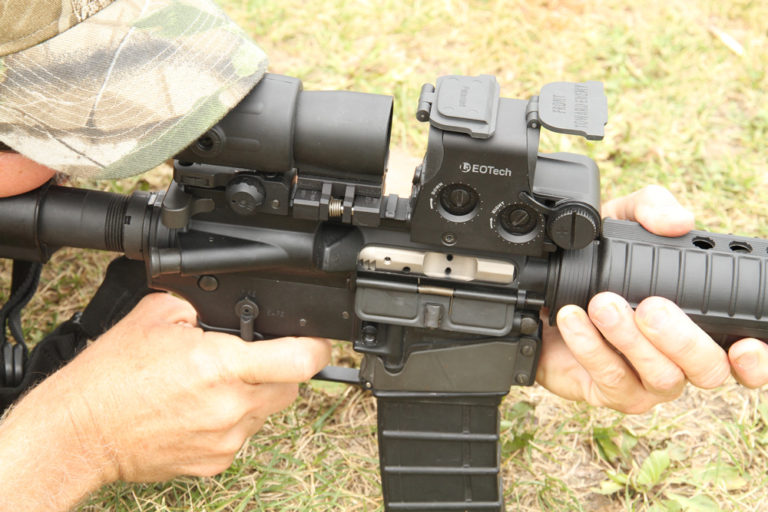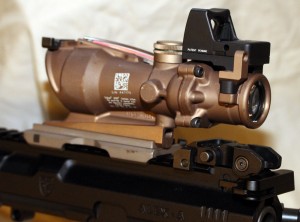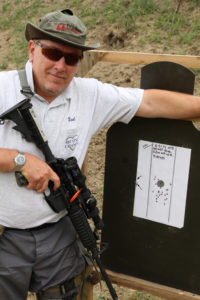

Not taking into account A1 and A2 iron sights, your AR can have one of two types of optics – red-dot sights or magnified scopes. Here's a look at both.
AR-15 Red-Dot Sights

The red-dot sight began with the Aimpoint back in the very late 1980s. It appeared in the U.S. in competition at the 1990 USPSA Nationals, on the pistol used by Jerry Barnhart. The first reaction was, “No way will that work.” After Jerry cleaned everyone’s clocks, Doug Koenig had one on his pistol a few months later at the IPSC World Shoot, where he became world champion.
As soon as national-level 3-gun competition began, rifles had red-dots on them. They were derided as “impractical” and “not real combat gear.” In the beginning, yes. But the reliability imperative of practical shooting competition (your gear is your problem, once the clock starts, and if it fails you do not get a do-over) meant all competitors using them were always looking for more reliability, durability and utility.
By the second Iraq war, red-dot sights had been adopted and proved their usefulness. It was mildly amusing, seeing photos of M4s in Iraq, rifles that were equipped to have made decent but not match-winning Open class 3-gun rifles back in the 1990s.

Red-dot sights work by projecting a red dot, reticle or other pattern onto a screen inside of a tube or housing. The miracle of optical physics presents the dot to you as if it were on the same optical plane as the target.
That is, it appears to be “out there” and not a dot a few inches from your face. This means your eye has only the one focus job, dot and target together. Your brain has only two things to deal with, dot and target.
You place the dot on the target and press the trigger.
But wait, there’s more goodness: the dot is, essentially, parallax-free. That is, if the dot appears to be at the edge of the field of view, the bullet will still strike at the dot. Moving the dot does not change the agreement of dot with bullet.
The bad news is simple, most dots need batteries.
Magnified AR-15 Scopes
Magnifying optics were not new when they began to be adopted on rifles in the trenches in WWI.
Since then, they have increased in durability, light-gathering, clarity and reticle designs. What they do is let you see better, but not necessarily shoot better.
The choice of magnifying optics comes down to a matter of balance. That is, size and weight against increased magnification and fragility.
Increased performance increases cost, where a top-grade scope can cost more than the rifle it is mounted on. And with variable scopes, there is a need to shift from one power to another, as any extreme is useful only for a specific purpose.
A 3-9X scope is great, at 9X, if you are shooting at something at extreme range. Let a target of opportunity pop up ten yards away, and 9X is very much the wrong power to be on.
This is an excerpt from Gunsmithing the AR-15 Vol. II.

Next Step: Get your FREE Printable Target Pack
Enhance your shooting precision with our 62 MOA Targets, perfect for rifles and handguns. Crafted in collaboration with Storm Tactical for accuracy and versatility.
Subscribe to the Gun Digest email newsletter and get your downloadable target pack sent straight to your inbox. Stay updated with the latest firearms info in the industry.

![Best Concealed Carry Guns In 2024 [Field Tested] Wilson Combat EDC X9S 1](https://gundigest.com/wp-content/uploads/Wilson-Combat-EDC-X9S-1-324x160.jpg)




